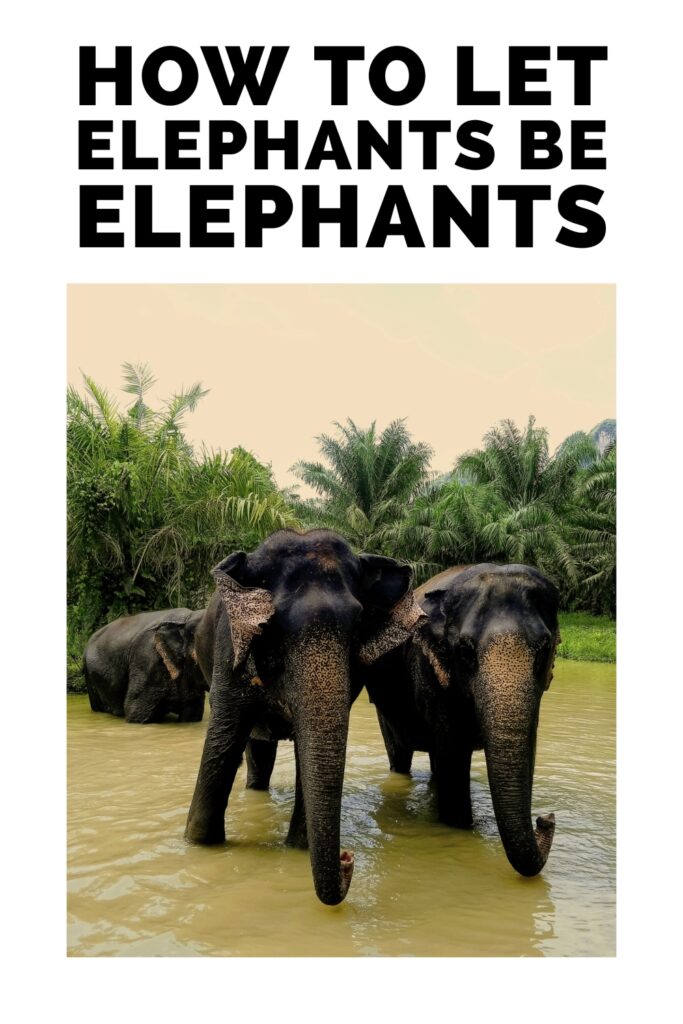
Type “best ethical elephant sanctuary in Thailand” into a search engine and it’s quite likely you will get a list of just the opposite. This is quite unfortunate because travelers are using the internet and social media more and more in their pre-trip research and tags such as “elephant friendly,” “ethical,” and “responsible tourism” are being falsely used as unique selling points in tourism to Thailand and other South East Asia destinations. Further, destination specialists and tour operators are relying on incorrect local information about elephant sanctuaries, and travelers are finding themselves at these camps while on a trip only to find very “unfriendly” practices occurring.
I’m a tour leader putting together at least one trip a year to Thailand, and others to Bali and similar locations and sending other independent travelers off on custom itineraries all over the world. I’ve put in countless hours researching this topic as my own personal views on the topic have developed over the more that 20 years I have been traveling to Thailand.
Back in the last 90s, the idea of elephant trekking in northern Thailand appealed to me greatly as I saw top tour companies offering these kind of trips more and more. Eventually, somewhere around 2003, I ended up on an “elephant safari” in Chatwan National Park in Nepal. This entailed riding on an elephant for an hour or so through the park where I was staying at a budget resort for two nights on the way to India. It was just me and a young French guy who were led through the jungle on this excursion but some of the guides were on elephants as well; I believe there were four or so elephants in total. Walkie Talkies were used like on an African Safari between rangers to communicate where wildlife sightings were happening, and suddenly we were wrangled into some brush where we surrounded a black rhino. It was at the same time amazing and extremely sad. I felt extremely sorry for all of the animals involved and that’s when I noticed the metal hooks in the hand of one of the rangers. These were for the elephants. Immediately, I wanted to go back to camp.
Years went by and I became fascinated with seeing photos of elephants playing in the water. I began to research how to witness this and planned a trip to Khao Lak to stay at a hotel near a river trail where elephants were said to be lead down to play in the ocean. When I got there, I was told that it was deemed unsanitary and the elephants had to forgo this activity due to the many hotels on the beach at that location. I continued to research and eventually found an “elephant friendly” bathing opportunity where I was to be lead alone into a river with an elephant and be able to bath him. When I arrived, I found that we had to ride them into the water. His name was Bunchoo and while I will never forget the experience, I was not comfortable riding him. Over the years, I followed this camp and found them to become more and more “friendly” and eventually stop the riding. But then the craze of “Elephant Bathing Tourism” took over and ultimately I began to realize that this is not something I can to condone or have my company be attached to.
Further research led me to articles about the new trend in Elephant Welfare, best described in Chang Chill’s motto: to “simply let elephants be elephants.” This means no touching, no hand to trunk feeding. At all. These amazing creatures have been through so much, some being rescued first from the teak logging industry, and then a second time from the trekking industry. Not all tourists have their best interest at hand, instead they want a selfie and back in the days of bathing with my groups, we witnessed other groups climbing on top of the elephants to get a good shot. This is distressful to them and creates disharmony in their lives.
I was working with Intrepid Travel at the time and I brought my concerns to their attention and asked them to find a 100% No Touch Elephant Experience and they presented me with Chang Chill. Owner, Eng, remodeled his sanctuary two years ago after attending a symposium on Elephant Welfare when he and his father were presented with new information about how to best create a completely responsible environment for their elephants and still benefit from tourists wishing to visit an elephant camp while traveling in Thailand. Their new camp, Chang Chill (“Chang” means “elephant” in Thai) is the most amazing elephant experience I’ve ever had. Obviously, they have their work cut out for them since they are one of the only camps that does not allow any type of touching, because unfortunately too many tourists still want to get that photo riding/bathing/hugging an elephant. I’m grateful that my groups understand the new trend in “total responsible tourism” and at the same time realize that many are just not educated as to the dangers to these creatures’ well-being. As I always like to say (thank you Maya Angelou), “when we know better, we do better.”
For more information about this topic, please visit Chang Chill’s website at: http://changchill.com and watch the YouTube below detailing the camp’s philosophy and standards. For more information about our Serenity In Siam Thailand Tours, Visit our website at: www.getouttheretours.com.